How to Optimize Paddle Dryer Performance?
Unlock 80%+ Thermal Efficiency and Slash Operating Costs with Science-Backed Methods.
7/28/20259 min read
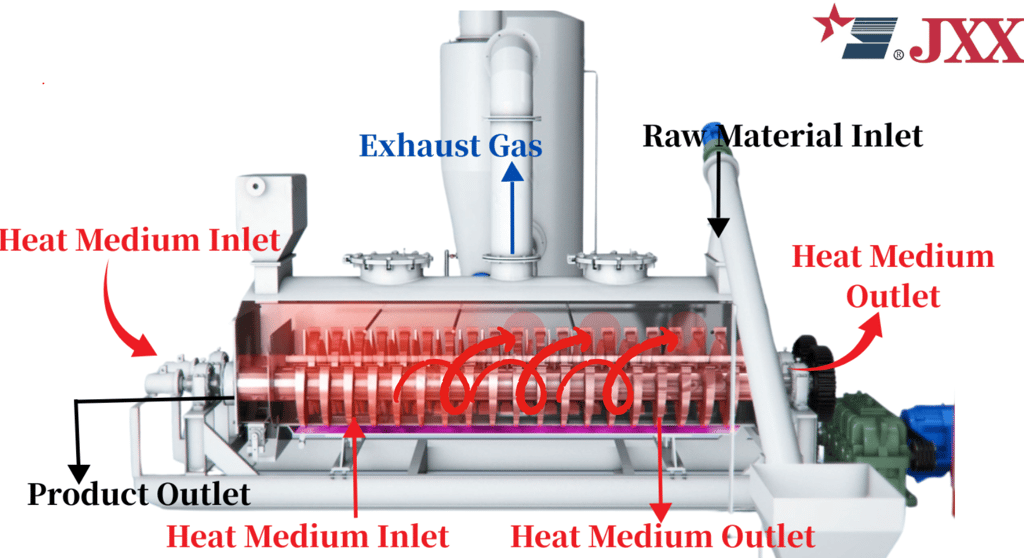

To optimize paddle dryer performance:
Fine-tune temperature/pressure settings
Maximize heat transfer with wedge-blade design
Implement predictive maintenance
Install IoT moisture sensors
Pre-condition feed materials.
These steps boost efficiency 15-30% and slash energy costs.
In today's competitive industrial landscape, maximizing efficiency isn't just a goal - it's a survival imperative. Paddle dryers process everything from pharmaceutical slurries to food waste, yet most operate below peak efficiency. When your dryer underperforms, you face three costly consequences: spiraling energy bills, inconsistent product quality, and unplanned downtime that cripples production schedules.
Recent industry data (Drying Technology Journal, 2025) reveals a startling gap: 68% of industrial paddle dryers operate at 15-30% below their efficiency potential. The causes? Outdated control methods, thermal surface fouling, and reactive maintenance practices. But the solution isn't machine replacement - it's strategic optimization.
Your Quick Guide to Peak Performance
Unlock peak performance from your paddle dryer by focusing on five critical areas: fine-tuning operational parameters, understanding the impact of blade design, implementing a robust maintenance schedule, leveraging advanced control systems, and ensuring proper material handling. This guide provides expert insights and data-driven techniques to boost thermal efficiency, cut energy costs, and maximize your return on investment.
Whether you're specifying a new system or looking to get more from your existing equipment, understanding the key levers for performance is crucial. Let's dive into the specifics of how you can turn your paddle dryer into a model of efficiency and reliability.
Table of Contents
1. What Are the Core Operational Parameters to Fine-Tune?
Fine-tuning temperature/pressure settings is your highest-impact starting point. Operating under vacuum (-0.05 to -0.09 MPa) is not just an option for heat-sensitive materials; it's a powerful efficiency tool that lowers the boiling point of solvents, allowing for effective drying at significantly reduced temperatures, which directly cuts energy consumption.
Jacket Temperature: Higher temperatures increase the thermal gradient, driving faster evaporation. However, exceeding the heat sensitivity threshold of your product causes scorching or degradation. The key is to find the minimum effective temperature.
System Pressure (Vacuum): Applying a vacuum drastically reduces the boiling point of the liquid within the product. This means you can achieve the same evaporation rate at a lower jacket temperature, leading to substantial energy savings and superior product quality for heat-sensitive materials.
Rotor Speed: This controls the product's movement and mixing intensity. A faster speed improves heat transfer by renewing the product at the heated surface but reduces residence time. A slower speed increases residence time but can lead to stagnant zones and uneven drying.
Residence Time: This is the duration material spends inside the dryer, adjusted via the rotor speed and the dryer's hold-up volume. The goal is to provide just enough time for the required moisture removal. Too long wastes energy and can degrade the product; too short results in off-spec, wet material.
Effect of Operational
Parameter Adjustments
2. How Does Paddle Blade Design Impact Efficiency and Throughput?
At its heart, a paddle dryer is a heat exchanger. The design of the paddles is the single greatest factor determining how effectively heat is transferred from the jacketed walls to the product. Using outdated, flat paddle designs is like trying to heat your house with the windows open.
Maximize heat transfer with a wedge-blade design. This isn't an incremental improvement; it's a transformative upgrade. The wedge shape creates an aggressive scraping action that prevents material buildup on the heated surface—a major source of inefficiency—while simultaneously promoting superior mixing and a longer service life.
Self-Cleaning Action: The sharp leading edge and specific angle of a wedge blade ensure continuous contact with the heated surface. This scrapes away potential fouling layers, maintaining a consistently high heat transfer coefficient. A layer of baked-on product as thin as 1-2mm can act as an insulator, reducing efficiency by 15% or more.
Enhanced Mixing: The geometry induces a rolling, fluidized motion of the product bed. This ensures all particles are equally exposed to the heated surface, eliminating hot and cold spots and guaranteeing a uniform final moisture content. This is critical for products where a few percentage points of moisture variation ruin the entire batch.
Durability and Longevity: Wedge blades are often hard-faced with wear-resistant materials like tungsten carbide. This makes them far more resistant to abrasion than standard flat paddles, maintaining their optimal clearance and performance for thousands of hours longer, which reduces maintenance costs and downtime.
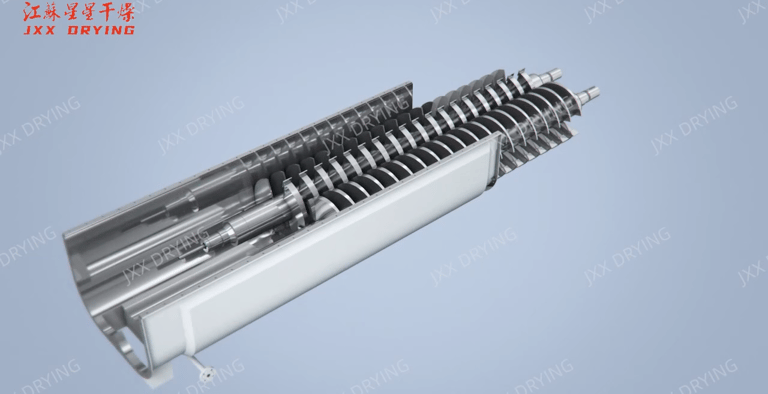

3. What Maintenance Mistakes Should You Avoid to Maximize Lifespan?
The most common and costly mistake is adopting a reactive maintenance strategy—waiting for something to break before fixing it. This approach guarantees unplanned downtime, catastrophic failures, and consistently rising operating costs. Transitioning to a proactive and predictive maintenance regime is non-negotiable for modern operations.
Reactive maintenance ignores tell-tale signs of wear, such as increasing power consumption (a sign of fouling or bearing issues) or gradual changes in product moisture (indicating worsening heat transfer). A scheduled program of inspection and monitoring is cheaper than a single unexpected shutdown.
Mistake 1: Ignoring Paddle Tip Clearance: This is the most critical mechanical metric. The gap between the paddle tip and the jacket should be minimal (typically 3-5mm) to ensure self-cleaning and efficient scraping. Worn paddles can double or triple this gap, creating a permanent insulating layer of product that skyrockets energy use. Action: Measure and record clearance during annual shutdowns.
Mistake 2: Neglecting Vapor Systems: Condensers and vent lines must be kept clean. A fouled condenser in a vacuum system creates backpressure, destroying the vacuum's effectiveness and forcing higher temperatures. Action: Implement a regular cleaning schedule for condensers and inspect vapor lines for blockages.
Mistake 3: Lubricating Based on Time, Not Condition: Over- and under-lubrication of bearings are both damaging. Action: Use ultrasound-based lubrication techniques to grease bearings only when needed, extending bearing life significantly.
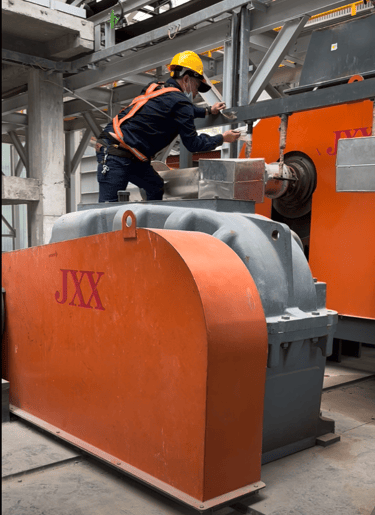

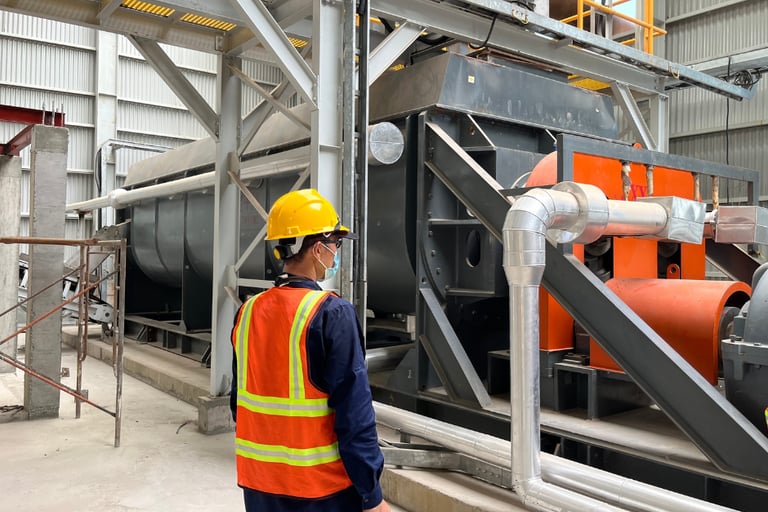

4. How Can Advanced Controls and IoT Boost Your Dryer's IQ?
Moving from manual control to automated, data-driven process control is the single biggest leap you can make in optimizing for consistency and efficiency. Modern PLC/SCADA systems, enhanced with IoT moisture sensors, do what an operator cannot: make instantaneous, precise adjustments 24/7 based on real-time product quality data.
Installing an IoT moisture sensor at the discharge of your dryer provides a continuous, real-time feedback signal on your final product quality. This allows the control system to automatically adjust rotor speed or jacket temperature to compensate for feed variations, guaranteeing a consistently dried product and maximizing energy efficiency
Closed-Loop Control: This is the ultimate goal. The moisture sensor provides the feedback, and the PLC makes the adjustments. For example, if the sensor detects product becoming too dry, it can slow the rotor speed slightly to reduce residence time, saving energy and preventing over-drying. This happens continuously, ensuring perfect product quality regardless of upstream fluctuations.
Data Logging and Analytics: These systems record all process parameters (temperature, pressure, speed, power draw, moisture). Over time, this data is invaluable for:
Identifying Inefficiencies: Spotting gradual increases in energy use per ton of product, signaling it's time for maintenance.
Process Optimization: Running designed experiments to find the most efficient recipe for each product you dry.
OEE Tracking: Automatically calculating Overall Equipment Effectiveness.
Remote Monitoring: Get alerts on your phone for any process deviations or alarm conditions, enabling you to respond to issues before they become failures, even when off-site.
5. What's the Right Way to Handle and Prepare Feed Material?
Your dryer's performance is ultimately determined by the quality of feedstock it receives. Inconsistent feed represents the primary obstacle to stable, optimized drying operations. Variations in moisture content, particle size, or feed rate force continuous dryer adjustments, resulting in poor quality control and energy waste. Proper feed material preconditioning provides the solution, with optimal feeding method selection being crucial to implementation.
The objective of preconditioning is to create a homogeneous, consistent feed stream. This typically begins with storing wet material in silos to ensure continuous supply, with the final selection of feeding method proving critical to success. Different feeding equipment determines the uniformity and controllability of material entering the dryer, directly impacting ultimate drying efficiency and stability.
Homogenization and Particle Size Control: Material homogenization through mixers or particle size control through crushers before feeding constitutes the foundation for consistent feed. However, this represents only the first step.
Feeding Method Selection and Comparison: The method for conveying and introducing preconditioned material into the dryer is paramount. Two primary configuration options exist:
Belt Conveyor System:
Advantages: Suitable for various bulk materials, high transportation capacity, long distances, relatively low energy consumption - ideal for high-volume material transfer from distant locations or stockpiles to the dryer system.
Disadvantages: As an open conveying device, it cannot precisely control the instantaneous flow rate. Uneven material distribution on the belt may cause feed fluctuations. It typically requires combination with downstream precision feeders (e.g., screw feeders) to achieve uniform, controlled feeding.
Screw Feeder:
Advantages: As a closed feeding device, it provides precise control over the feed rate. By adjusting screw rotation speed, it enables direct, continuous, and uniform material metering into the dryer. This represents the most common and effective method for achieving stable, repeatable feeding.
Disadvantages: Limited conveying distance and elevation height; potential clogging risks with highly viscous or agglomerating materials.
In optimized drying systems, "belt conveyors" and "screw feeders" typically operate synergistically. Belt conveyors handle efficient, large-scale transportation from storage points to buffer silos near the dryer; screw feeders then serve as final precision feeding devices installed beneath buffer silos, responsible for introducing material at constant, controlled rates into the dryer. This stable, uniform input forms the foundation upon which all other optimized parameters (temperature, speed, vacuum) depend.
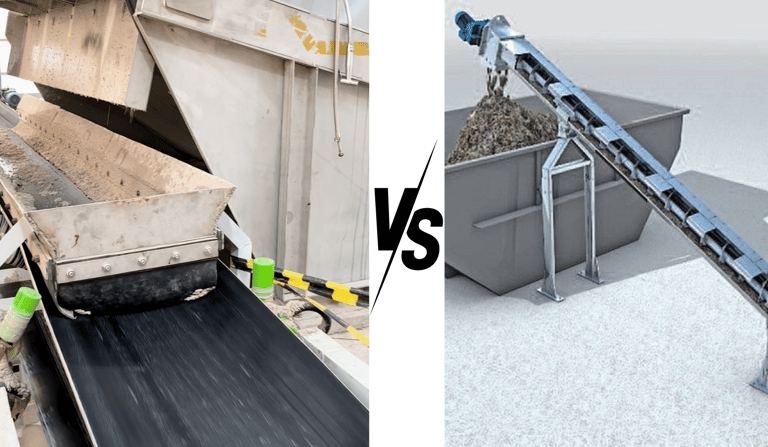

Conclusion: Integrating for Maximum Impact with Jexdry
Optimizing your paddle dryer is not about choosing one strategy over another. The true power lies in the integration of all these approaches. Fine-tuned parameters are wasted if worn paddles destroy heat transfer. A perfectly conditioned feed offers no benefit if a reactive maintenance culture leads to weekly unplanned shutdowns.
The strategies outlined—from precise operational control and advanced mechanical design to data-driven maintenance and intelligent feeding—are interdependent. By addressing them systematically, you transform your paddle dryer from a simple, energy-intensive machine into a predictable, highly efficient, and profitable core asset.
The documented 15-30% efficiency gain is not a theoretical maximum; it's an achievable reality for operations willing to embrace this holistic view of performance optimization - a philosophy that defines the Jexdry approach to industrial drying solutions.
Ready to Benchmark Your Performance?
Our Jexdry engineering team specializes in conducting comprehensive paddle dryer efficiency audits. We'll measure your current baseline, identify your biggest opportunities for improvement, and provide a clear ROI calculation for any recommended upgrades. [Contact Jexdry today] to begin your optimization journey with a trusted partner in drying excellence.
External Links & Recommendation
Paddle Dryer Principles: Learn more about the fundamental working principles of paddle dryers on Wikipedia – Agitated Thin Film Dryer (Note: Paddle dryers are a key type of ATFD).
Energy Efficiency in Drying: The U.S. Department of Energy offers extensive resources on improving energy efficiency in industrial systems. Visit the DOE Advanced Manufacturing Office.
Predictive Maintenance Strategies: For a deeper dive into data-driven predictive maintenance, the Society for Maintenance & Reliability Professionals (SMRP) is an excellent resource.
Boost Your Drying Efficiency by 30% Talk to Our Engineers Now!
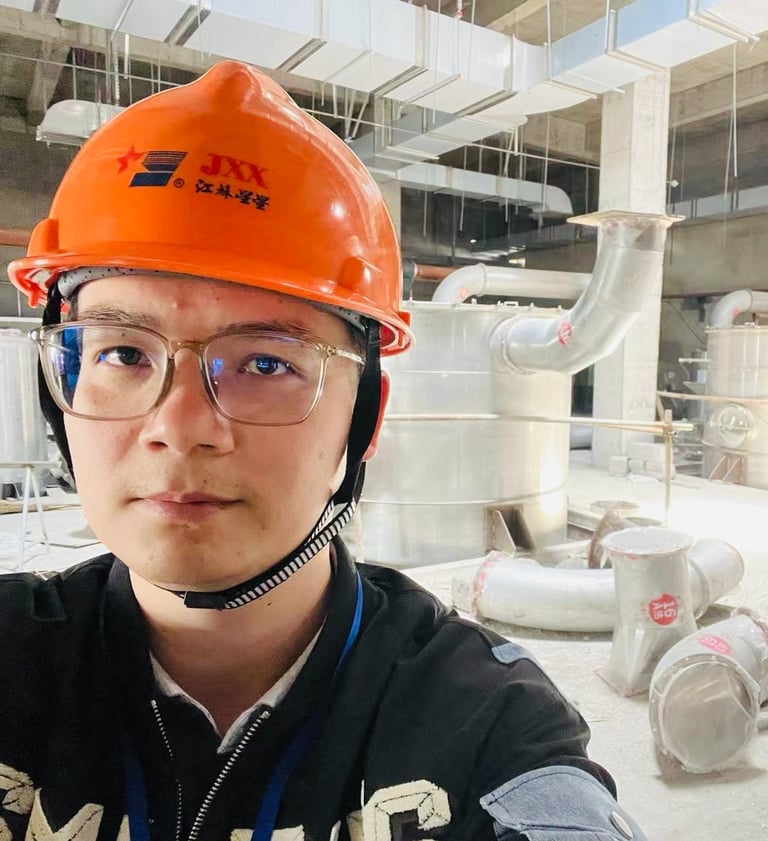

I’m Zar Zha, founder of jexdry.com, a trusted Chinese drying equipment manufacturer rooted in precision engineering since 1998.
As a family-owned business built on three generations of industrial innovation, we specialize in customized drying solutions for demanding industries like food processing, pharmaceuticals, and chemical production.
Over the past 25+ years, we’ve empowered 80+ countries and 200+ global clients—from Fortune 500 food giants to sustainable biofuel startups—to optimize their drying efficiency, reduce energy waste, and scale production safely.
At JexDry, we’re more than equipment suppliers; we’re partners in solving industrial drying challenges. I’m sharing decades of hands-on experience here to help engineers and plant managers master drying technology, avoid costly mistakes, and future-proof their operations.
Feel free to leave your information below, and we’ll get back to you as soon as possible. Alternatively, you can click the green WhatsApp button at the bottom of the page to contact us directly.
JexDry is a family-run business established in 1998, dedicated to providing customers with the most suitable drying equipment to make their production work more efficient, smooth, and environmentally friendly.
Products
Contact
+86-137-7501-3369
© 2024. All rights reserved.
